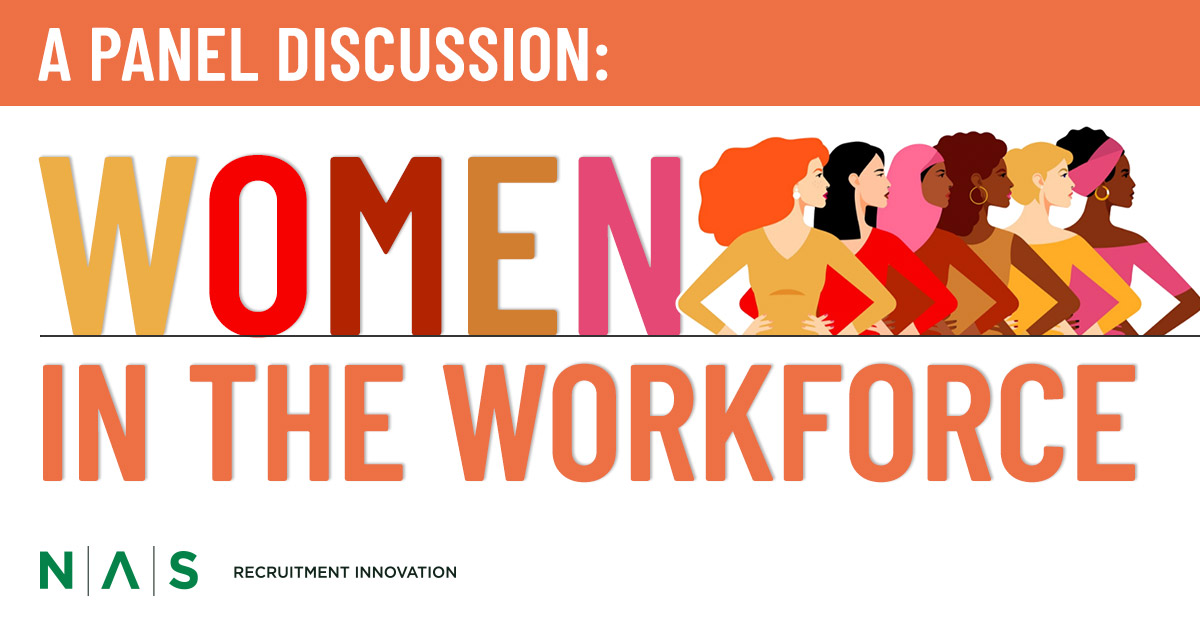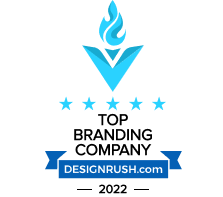-
Celebrating Female Leaders in the Workforce
Posted by Jennifer R. Henley | Chief Operating Officer (COO) on April 19th, 2022 
In celebration of International Women’s Day on March 8, NAS Recruitment hosted five women leaders from around the country for a panel discussion about Women in the Workforce. I served as moderator for a lively discussion of how the roles of women in the workplace have evolved over time, as well as how discussions around inclusion and belonging can lead to a more collaborative, flexible and empathetic work environment. Here are some of the highlights.
Meet the Panelists

Senior Executive Search Consultant, Diversity Consultant at M3 Executive Search
PHR, SHRM-SCP, CDE HR Executive
Global VP of HR at M3 USA
Director of Recruitment Operations at Methodist Le Bonheur Healthcare
President/Executive Consultant at Roemer Consulting Group
Moderator: Jennifer Henley, PHR, SHRM-CP
Chief Customer Officer at NAS Recruitment Innovation
Impacts of the Pandemic on Women in the Workforce
In 2020, the average woman had twice the amount of unpaid work compared to men. The burden of shopping, cooking and homeschooling of children took priority to women maintaining their job roles. Since March 2020, 2 million women have left the workforce. Organizations are now responding to this and looking at women in the workforce in a whole new way.
How has your organization responded to women leaving the workforce?
Jill: At MLH, we pivoted to support all our workers with flex work hours, remote work and even used humanitarian funds to support employees who needed it. Our team looked to support family units and hire spouses who were affected by the pandemic, too. We partnered with the YMCA to support frontline employees and open an on-site remote schooling program. Another big change was that our meeting times were adjusted to give families time to handle schooling and personal commitments. We need to re-evaluate how we look at our employees and make the changes necessary.
Nadajalah: With the changes in executive search, you have a set of individuals who get opportunities but also anxiety. Women really could take advantage of open roles and start the conversation of negotiating compensation and flexible work schedules. They have the power to set their expectations and talk freely about things they couldn’t discuss in the past. We have made it possible to work remotely by choosing your schedule – you can compartmentalize and balance your days.
Shaquanda: Early during the pandemic, there was fear. People were leaving organizations because they didn’t know what was going to happen and what the long-term impacts would be. Initially, there was a steadfastness to stay with the existing companies, but over time the longer days of the remote culture started causing more burnout.
Marina: Women are making different choices and have the bravery now to express what they want for themselves and their families. Flexibility is important – blackout time slots in the morning were normalized for when families have to drop off kids at school. Managers need to make efforts to coordinate with HR to see what is needed in the workforce. We need to offer programs so women can learn, network and have reimbursement to continue their education.
Striking a Balance in a Remote Work Environment
- Take a lunch
- Be present
- Listen to your body
- Be intentional
- Walks are as important as meetings
- Turn off notifications
- Put yourself first
Can you share examples of how your women leaders have built trust to increase productivity that others can replicate?
Stephanie: Women are willing to step up and fill in the gaps that they see. Women care about the employees that they have. They take on more but set boundaries. Women are willing to take on supporting ERGs and DEI work on top of their regular work and personal lives.
Shaquanda: A female leader I once had instilled fear. Because of her, I questioned my capabilities. She taught me what not to do as a leader and it influenced my style of leadership completely. The female leader I work with now is a complete 180. She has been my voice when I was not at the table, she has been my mentor and coach and she evaluates employees’ needs. This has built trust and productivity in teams and their individual careers.
Jill: When starting at MLH, I looked for who I wanted to be like and who I admired. Monica Wharton, our EVP and Chief Administrative Officer, is a woman of color who values all employees equally. It inspires me to tell my team to rest, restore and renew. You need to do this to function at your best. You get permission to look at life outside of work.
Marina: Women can make team environments more collaborative and less authoritative. Women leaders need to know their position and that they have a valued voice. You will earn your respect once you do this and make good decisions for the people on your team. You can exercise authority while pivoting and working with individuals who need a softer approach. It’s a balance between the two.
Nadajalah: At Executive Search, you work directly with the client, but before that, I would introduce myself and ask what I could do to help new female employees. I wanted to make their transition easier.
How has your organization embraced the need to do the deep cultural work required to create a workplace where all women feel valued?
Marina: We organized a DE&I Council – bringing individuals across all divisions and groups and companies to discuss what we needed as a team. We had monthly meetings and developed a plan and goals. We wanted to recognize the diversity of our company. We reviewed our existing data to see if there was a gender pay gap, how women were represented on executive teams and if there was a gender turnover. There needs to be an equitable analysis of where the company currently stands internally. It was time to spotlight women, celebrate them and set the tone for other organizations. The recruitment and talent acquisition pool needed to be widened. You have to be intentional about who you hire. You have to target specific populations to broaden who you hire.
Jill: We are consistently prioritizing diversity and it’s a pillar of every organization. 83% of our workforce is made up of women at MLH. Age is another huge piece of DE&I. Women range from their 20s to mid-70s. A woman doesn’t stop learning and growing at a certain age.
Nadajalah: Women I’m hiring look for the DE&I information. If your leadership doesn’t represent what you communicate, then they won’t want to work for you. You can lose candidates over this.
Stephanie: We looked at psychological safety and had women speak up about bias happening in the organization. If the relationship and safety aren’t there, then it’s hard to make the change. Allow yourself and your employees to question, make mistakes and learn from it.
Shaquanda: Once we get to the Executive level, we can feel like there is nothing for us at that level. But we must make connections with one another. When there is 3+ women in a room, there is a new level of collaboration and comradery. Spend intentional time thinking about how to make things better and ensuring every woman can bring her whole self and feel supported.
Seven Key Takeaways + What Can We Do Moving Forward
- When an organization or leader makes an effort to understand and adjust to employee needs, you get more loyalty and productivity.
- Asking employees what they need will make them want to give back to the company.
- Develop a meaningful diversity, equity and inclusion strategy for your leadership pipeline.
- Track and examine key DE&I metrics to identify gaps in your leadership pipeline.
- Identify hidden biases that may exist along the leadership pipeline and that create unequal access.
- Create more inclusive workplace cultures to foster belonging.
- Consider implementing a boomerang program to engage women who have left.
If you want to hear more, you can view the entire panel discussion here. Be sure to subscribe to our communications by subscribing to our blog or filling out our contact form. We’ll notify you of upcoming webinars and posts.
Jennifer R. Henley | Chief Operating Officer (COO)
Jennifer Henley is a trusted authority in recruitment solutions and consultative client services. She possesses the Professional in Human Resources (PHR) and SHRM-CP designations, is a proud member of MAHCR, NAHCR and SHRM, and is a featured speaker at HR communications industry conferences and events nationwide.



